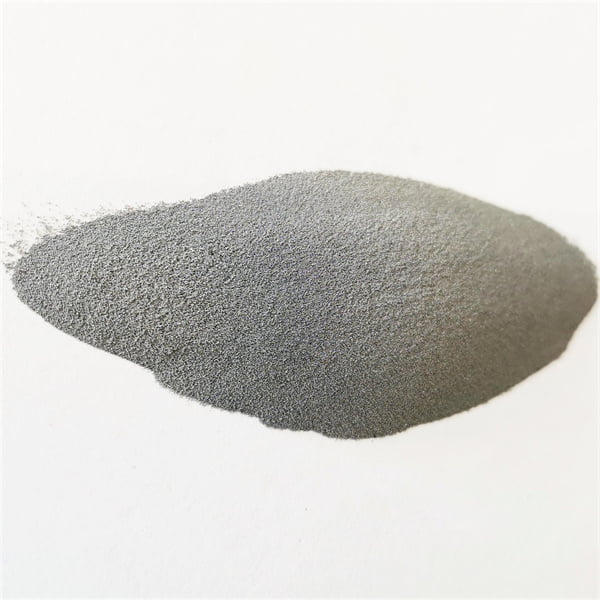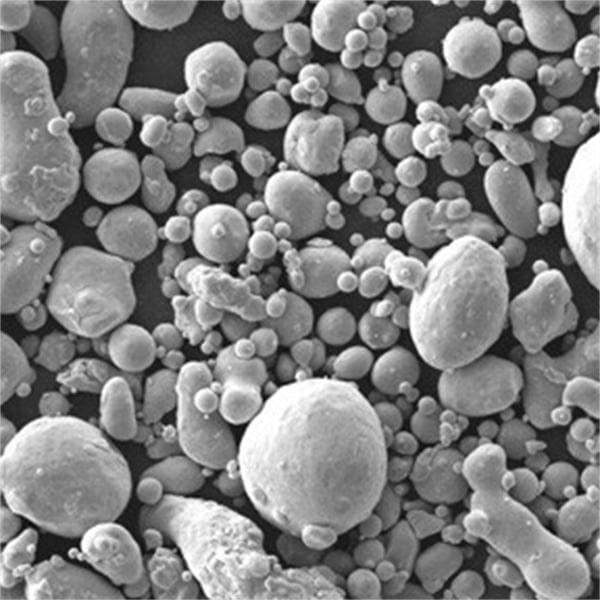Imagine a world where your magnetic components could be lighter, stronger, and more efficient. That’s the reality offered by FeNi50 powder, a revolutionary material poised to transform the landscape of electromagnetism. But what exactly is FeNi50 Power, and how can it empower your magnetic designs? Buckle up, because we’re about to delve into the fascinating world of metal powders and explore how FeNi50 can become the secret weapon in your engineering arsenal.
Unveiling the Power of FeNi50
FeNi50 powder is a metal alloy composition consisting of, you guessed it, roughly 50% iron (Fe) and 50% nickel (Ni). This seemingly simple combination unlocks a treasure trove of magnetic properties highly desirable for various applications. Here’s why FeNi50 stands out:
- High Permeability: Imagine a sponge that readily absorbs water. That’s how FeNi50 behaves with magnetic fields. Its high permeability allows it to conduct magnetic flux with exceptional ease, translating to more efficient use of magnetic energy in your components.
- High Saturation Magnetization: Think of this as the sponge’s maximum water capacity. FeNi50 boasts a high saturation magnetization, meaning it can hold a significant amount of magnetic energy before reaching its limit. This translates to stronger magnetic fields for your components.
- Favorable Curie Temperature: Just like water boils at 100°C, magnetic materials lose their magnetism when heated beyond a specific temperature, called the Curie temperature. FeNi50 exhibits a relatively high Curie temperature, ensuring your components maintain their magnetic properties even in moderately hot environments.
But FeNi50 isn’t a one-size-fits-all solution. Different applications require unique magnetic characteristics. To cater to this diversity, manufacturers offer a variety of FeNi50 powder models with distinct properties. Let’s explore some of the most popular options:

FeNi50 Powder Model Rundown
| Mô hình | Miêu tả | Key Properties |
|---|---|---|
| Atomistica AM50 | Produced via gas atomization for high purity and consistency. | Excellent permeability and low core losses. |
| Höganäs 9250 | Offers a good balance between cost and performance. | Ideal for general-purpose magnetic components. |
| Carpenter Invar AM | Tailored for applications requiring dimensional stability with temperature fluctuations. | High thermal expansion coefficient match with other materials. |
| BASF AddiPrint 900 | Optimized for additive manufacturing processes like 3D printing. | Enables creation of complex magnetic geometries. |
| AMC Eclipse 18 | Engineered for high-frequency applications. | Minimizes eddy current losses at high frequencies. |
| Vacuumschmelze VACOMELT 2750 | Exhibits exceptional mechanical strength. | Well-suited for applications requiring robust magnetic components. |
| GKN Hoeganaes AM50Ni | Features a slightly higher nickel content for improved saturation magnetization. | Ideal for applications demanding strong magnetic fields. |
| Carpenter Invar® 42 | Offers a lower nickel content (42%) for a more cost-effective option. | Maintains good permeability while reducing material cost. |
| Höganäs 9210 | A pre-alloyed variant with enhanced magnetic properties compared to blended FeNi powders. | Delivers consistent performance across production runs. |
| AP & C Ltd. AM50 | Manufactured using water atomization for a more affordable option. | Well-suited for applications prioritizing cost over absolute peak performance. |
Choosing the Right FeNi50 Powder: This diverse selection empowers you to select the perfect FeNi50 powder for your specific needs. Consider factors like required permeability, desired saturation magnetization, operating temperature range, and budget constraints when making your choice. Consulting with a material supplier or a magnetic component manufacturer can provide valuable guidance in this process.
ỨNG DỤNG FeNi50 power
FeNi50 isn’t just another metal powder; it’s a game-changer across various industries. Here are some of the exciting applications where FeNi50 shines:
- Inductors and Transformers: FeNi50’s high permeability translates to more efficient energy transfer in inductors and transformers, leading to smaller, lighter designs with lower energy losses.
- EMI/RFI Shielding: Electromagnetic interference (EMI) and radio frequency interference (RFI) can disrupt electronic devices. FeNi50’s ability to effectively shield against these unwanted signals makes it a valuable material for enclosures and protective components.
- Magnetic Sensors: The precise control over magnetic fields offered by FeNi50 allows for the creation of highly sensitive magnetic sensors used in various applications, such as position sensing, motion detection, and medical imaging.
- Motors and Generators: FeNi50’s combination of high permeability and good mechanical strength makes it suitable for motor and generator cores, leading to more efficient power conversion and potentially lighter, more compact designs.
- RF/Microwave Components: At high frequencies, eddy currents can create significant energy losses in magnetic components. Specific FeNi50 models, like AMC Eclipse 18, are engineered to minimize these losses, making them ideal for RF and microwave applications like filters and antennas.






Advantages of FeNi50 for Magnetic Components
Now that we’ve explored the applications, let’s delve into the specific advantages FeNi50 Power offers compared to traditional materials like ferrites or laminated steel:
- Increased Efficiency: FeNi50’s high permeability translates to lower core losses, resulting in more efficient use of energy in your magnetic components. This can lead to significant savings on energy consumption, especially in applications like transformers and inductors.
- Reduced Size and Weight: The superior efficiency of FeNi50 allows for smaller and lighter component designs compared to traditional materials. This is a major advantage for applications where weight and space are critical factors, such as in aerospace, automotive, and portable electronics.
- Improved Temperature Performance: FeNi50’s relatively high Curie temperature ensures your components maintain their magnetic properties even in moderately hot environments, offering better performance stability compared to some ferrites that exhibit a rapid decline in magnetism at elevated temperatures.
- Design Flexibility: Specific FeNi50 powders, like BASF AddiPrint 900, are optimized for additive manufacturing techniques like 3D printing. This opens doors for creating complex magnetic geometries that wouldn’t be possible with traditional manufacturing methods.
Disadvantages of FeNi50 Power for Magnetic Components
While FeNi50 boasts impressive advantages, it’s important to consider its limitations:
- Higher Cost: Compared to some traditional materials like ferrites, FeNi50 powder can be more expensive. However, the potential benefits in terms of efficiency, size, and weight reduction may outweigh the initial cost increase for certain applications.
- Processing Considerations: Some FeNi50 powders require specialized processing techniques like metal injection molding (MIM) or additive manufacturing. These methods might have higher upfront costs and require expertise compared to traditional stamping or machining techniques used with ferrites or laminated steel.
- Brittle Nature: FeNi50, like most metal powders, can be somewhat brittle compared to some ferrites. This needs to be taken into account during component design and handling to avoid potential damage.
FeNi50: A Balanced Choice for Advanced Magnetic Components
Weighing the advantages and disadvantages reveals that FeNi50 Power isn’t a universal replacement for all magnetic materials. However, for applications where efficiency, size, weight, and design flexibility are paramount, FeNi50 offers a compelling value proposition. As processing techniques for FeNi50 become more established and potentially lower-cost, its adoption across various industries is likely to accelerate.

Câu hỏi thường gặp
| Question | Answer |
|---|---|
| What is FeNi50 powder made of? | FeNi50 powder is a metal alloy composed of roughly 50% iron (Fe) and 50% nickel (Ni). |
| What are the key properties of FeNi50? | FeNi50 boasts high permeability, high saturation magnetization, and a relatively high Curie temperature, making it ideal for various magnetic applications. |
| What are some advantages of using FeNi50 in magnetic components? | FeNi50 offers increased efficiency, reduced size and weight, improved temperature performance, and design flexibility compared to some traditional materials. |
| What are some disadvantages of using FeNi50 in magnetic components? | FeNi50 can be more expensive than some traditional materials and might require specialized processing techniques. Additionally, it can be somewhat brittle. |
| What are some applications for FeNi50 powder? | FeNi50 finds use in inductors, transformers, EMI/RFI shielding, magnetic sensors, motors and generators, and RF/Microwave components. |
| How do I choose the right FeNi50 powder for my application? | Consider factors like required permeability, desired saturation magnetization, operating temperature range, and budget constraints. Consulting with a material supplier or a magnetic component manufacturer can be helpful. |
About 3DP mETAL
Product Category
LIÊN HỆ
Bạn có thắc mắc không? Hãy gửi tin nhắn ngay cho chúng tôi! Sau khi nhận được tin nhắn của bạn, chúng tôi sẽ xử lý yêu cầu của bạn với cả một đội ngũ.
